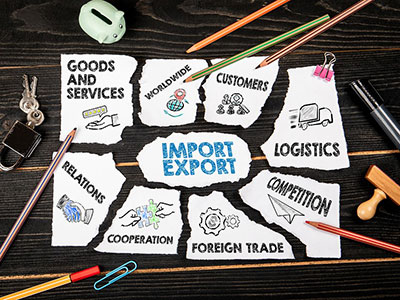

The White House has launched a cabinet-level supply chain council as the criticality of the topic rises to the top. Although they emphasized the minimization of supply chain disruptions as it relates to inflation, our perspective is that the supply chain is much bigger than that. From national security to securing supply chains of the future, there is tremendous work that industry must take on at a dramatically accelerated pace for companies that want to thrive 5 to 10 years from now.
Why Supply chain Resilience Matters
China is the largest manufacturer of the world and there are many risks rising to the top. For example, China is quietly working on several fronts:
- Supporting Russia and Iran behind-the-scenes (buying up oil etc.)
- Threatening Taiwan (which produces 90% of the advanced computer chips in the world)
- Threatening goods movement in the South China Seas (risking shipments to/from Asia)
- Buying up and/or taking control of farmland, critical minerals, ports/ terminals (including control of the Panama Canal), and other infrastructure around the world
- While the US has decreased carbon emissions by 20% since the peak, China is expected to be at an all-time high in 2023. They permitted 2 coal plants per week in 2022.
There are other risks throughout the world. Look no further than the Russia-Ukraine war, the Israel-Hamas war, etc. Each of these events impact the supply chain. In addition, there are the many disruptions carrying on since the pandemic caused by a variety of factors including lack of resources (labor, materials), weather, strikes, etc. The baby boomers are retiring at a quick pace, creating a shortage of resources we haven’t seen in our memories.
Thus, supply chain resilience has become of paramount importance.
Supply Chain Resilience Path Forward
Unfortunately, there is no 5-step plan to check off to create a resilient supply chain. The bottom line is that it requires confronting reality, uncommon common sense, execution of process disciplines, innovation, and a willingness to take smart risks and invest wisely.
Our proactive clients are jumping on creating a resilient supply chain. In no special order, they are following several of the following strategies:
- Rapid assessment: It helps to know where you are starting (strengths, weaknesses, risks, priorities) so that you can focus efforts rapidly. Learn more about LMA’s complimentary supply chain assessment.
- Reshoring: Getting manufacturing under better control
- Nearshoring/ Friend shoring: Bringing manufacturing closer to consumers/ customers to minimize disruptions and lengthy transit times.
- Backup sources of supply: Pursuing multiple backup sources of supply to cover for unexpected issues.
- Securing funding to support resiliency and growth: Investments are required (technology, people, infrastructure) to create supply chain resiliency.
- Implementing technology to support resiliency: Smart executives are upgrading ERP and related technologies (IoT, AI, CRM, customer/supplier portals, business intelligence, etc.) to increase visibility, automate mundane tasks, and upgrade the customer experience.
- Cross-training internal & external: In addition to cross-training resources to backfill key roles, smart executives are supplementing resources with consultants, collaborating with supply chain partners, and finding creative solutions to ensure customer service and profitable growth during volatile times.
- Moving from vendors to partners: Vendors will not be there when you need them. Vendors implies price. Upgrading to suppliers is a step in the right direction; however, during the risk laden times, partners are needed.
- SIOP (Sales Inventory Operations Planning): Upgrade your demand and supply planning to get in front of what’s needed to create a resilient supply chain with a SIOP process. Learn about SIOP, also known as S&OP, and read our recent article on moving manufacturing forward instead of backwards with SIOP.
The Bottom Line
There are many more strategies you should pursue to ensure supply chain resiliency. Start with a rapid assessment while jumping on at least one strategy that supports your company objectives. Don’t just add a program and assign your already limited resources to another priority. Instead, do the hard work to determine what will make a difference and focus your resources.
If you are interested in reading more on this topic:
A Resilient Supply Chain Built for Competitive Advantage


